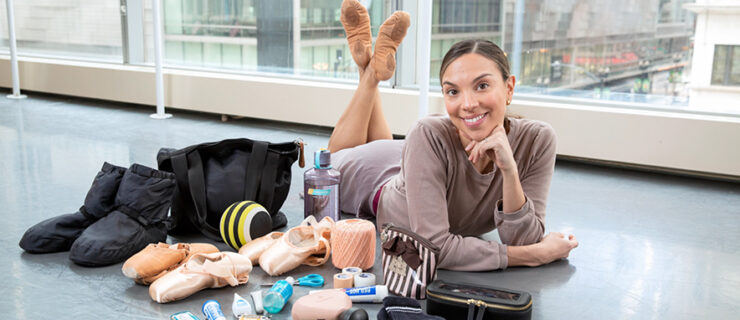NYCB's Maria Kowroski Reflects on the Challenges, Joys and Mysteries of Balanchine’s "Mozartiana"
The first time I was called to learn Mozartiana, I didn’t think I would actually get to do it. It’s a coveted ballerina role in the company, and I was still early in my career. But I got to dance it once or twice, and then not again for many years. The ballet isn’t in our repertoire that often, so each time we’ve performed it I’ve been at a different level as a person and as an artist.
At first I was tentative because I was figuring out how to make it work for my body. I remember watching Kyra Nichols perform Mozartiana from the wings. She made it look so easy. She’d come offstage barely sweating, hardly breathing—so I thought, What am I doing wrong? Why does it feel so hard? But I understood it better the more I did it. The role isn’t like Black Swan, where you’re going full force. There’s nothing technically scary to do—it has fun steps and is a wonderful way for a dancer to interpret music. Sara Leland, who taught me the role, gave me lots of musical freedom and encouraged me to be more expansive, daring and abandoned.
 Paul Kolnik, Courtesy NYCB
Paul Kolnik, Courtesy NYCB
Mozartiana’s music, an orchestral suite of the same name, was written by Tchaikovsky as a tribute to Mozart and is based on four of the great composer’s piano works.
Four little girls surround me during the ballet’s opening movement [called the “Preghiera,” or prayer]. Seeing their faces so full of hopes and dreams makes me want to pray for them and for a better future. I have a very emotional connection to the “Preghiera.” It was the last thing my mother saw me dance before she passed away, and every time I perform it, I think about her. Also, a strange thing happened shortly after Karin von Aroldingen died. As I stood with my head down at the beginning, I felt her and Balanchine’s presence, as if they were watching me, supporting me.
Later my partner and I come together and dance four alternating solos. The biggest challenge is to not work too hard, which sounds weird. But the choreography doesn’t need anything extra. I just need to listen to the music, hear all the different notes and not pound it out. One of my favorite moments is during my last solo before the pas de deux. It’s the trickiest of all of them, but it feels very powerful—there’s a diagonal with a sissone and step-up to sous-sus, and I just love the freedom of movement. I frequently dance Mozartiana with Tyler Angle; once our solos are finished, it’s such a relief to be face-to-face and just enjoy each other and dance. We’re such good friends offstage that it makes the ballet that much more enjoyable.
I feel fortunate to have performed Mozartiana at so many points in my career. Many ballets in our repertoire speak for themselves, but this one has more depth and needs an experienced ballerina to interpret it. I can’t say I fully understand it, but I will always try to do better.





